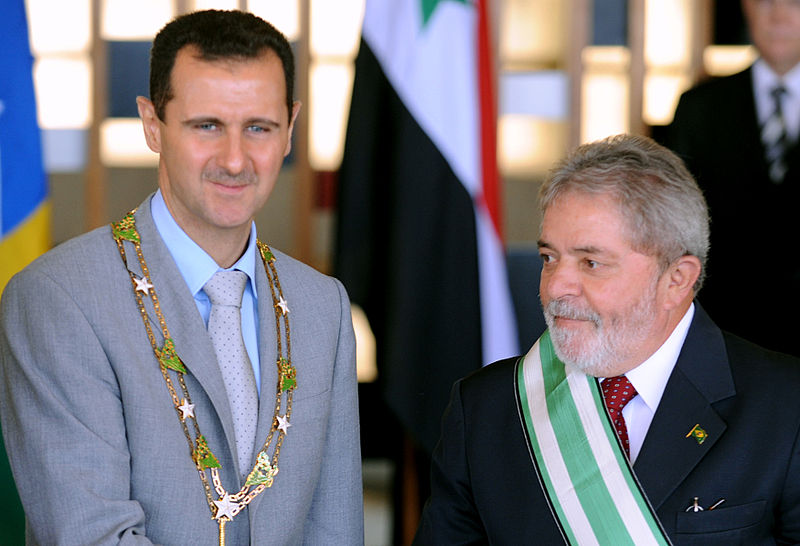Over the past year, U.S. policy in Syria has focused on the removal of ISIS and the pursuit of a political compromise with the Bashar al-Assad regime. In truth, though, this strategy only serves to exacerbate the tensions in the region. ISIS is, in large, a byproduct of the excessive use of force by Assad against a predominantly Sunni population. The Assad regime and its Russian backers continue to flout the lines drawn during a Cessation of Hostilities agreement and commit human rights violations with impunity, dampening the resolve of our Sunni and Kurdish allies in their pursuit of ISIS. Therefore, if ISIS is to be eliminated, Assad must first capitulate to the international agreements that he continues to violate. To this end, it’s becoming increasingly necessary for the United States to authorize military force against the Assad regime, thereby enforcing the COH lines and negating Assad’s negotiating leverage in the future.
Initiating strikes against Assad’s military component is long overdue. Thus far, the Syrian regime hasn’t suffered a direct consequence for any of its egregious acts, to include the use of chemical weapons against civilians, which had been previously marked as a “red line” by President Obama. If military force is authorized, Russian assets in Syria don’t need to be targeted, making it unlikely that Russia will attack U.S. forces in retaliation. Evidence for this is found in the November 2015 incident involving a Russian Su-24 aircraft being shot down by a Turkish F-16. Russia did not strike back against our NATO ally then, and it is doubtful they would now. If Russia did react in any way, they would do so by bombing our allies in Syria, which is a strategy they already pursue with impunity. Nevertheless, it should always be made clear to Russian leadership that targeting U.S. aircraft would be treated in accordance with Article 5 of the North Atlantic Treaty: collective defense.
Retaliating against Assad’s COH violations would lead to the end of Assad’s bombing of civilian targets and blocking of aid convoys, finally permitting a path for genuine humanitarian intervention. Additionally, a more assertive U.S. military posture will better defend our Sunni allies, who view Assad as the primary belligerent in the conflict as he refuses to fight ISIS for his own benefit. Without Sunni cooperation, Kurdish fighters can’t project force against ISIS outside of traditionally Kurdish lands, due to the risk of aggravating the innate ethnic divides of the region. Furthermore, Assad can’t be expected to pick up the slack in a front against ISIS. His regime has thus far proven incapable of governing large swaths of land east of Damascus and has lost considerable support from the rural population needed to take back and secure land. Any action other than this risks alienating Sunnis against the United States and our Kurdish allies, as well as deteriorating the anti-ISIS alliance.
Following the forced compliance of Assad, the first priority should be the elimination of ISIS with a newly minted coalition. Then, with the COH holding firm, Assad should be coerced into a gradual release of power with the idea of a transitional government in mind. The idea that Syria can exist after this conflict as a centralized authoritarian state is increasingly erroneous. After all, many ethnic minorities, such as the Druze and Kurds, have shown an ability to police their own land, absent the regime. Orchestrating a neutered federal government with semi-autonomous zones for various ethnicities is the best option for long-term stabilization and has precedence in the Dayton accords, which divided Bosnia by sectarian lines. Although there’s certainly room for criticism of the 20-year partition, the fact remains that the violence ended.
There is always the possibility that actions against Assad and his backers will further deteriorate relations with Syria and Russia. Nevertheless, any other action sans a consequence for Assad’s infringement of the COH will be seen by observant players as a green light for further disobedience against international agreements in the Middle East and elsewhere. The path recommended is the one best suited to reassert U.S. leadership on the world stage and facilitate an end to the Syrian conflict. Allowing an emboldened Assad to dictate the direction of Syria will only delay the defeat of ISIS and afford him the opportunity to maintain a feeble grasp on his waning territory.
Kyle Rempfer is a sophomore government & politics and Russian major. He can be reached at krempfer@terpmail.umd.edu.



